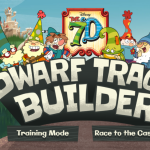Chess tips – If you want to be a chess champ, it’ll take lots of learning and lots of practicing. Here are some tips to get you started.
Learn the moves
Each chess piece can move only a certain way.
Open with a pawn
Move the pawn in front of either the king or queen two squares forward. (Only on its opening move can a pawn move two squares). This opens pathways for your bishops and queen to enter the game. They move on an angle and can’t get out onto the field of battle if pawns are in the way.
Get the knights and bishops out
Before you move your queen, rooks or king, move your knights and bishops toward the center of the board. You want to get these pieces out from behind the pawns so they can attack.
Watch your back!
Always look at all your possibilities. Look at moves that would capture your opponent’s men or threaten his king first. But always double-check your moves before you play them.
Don’t waste time
Don’t make too many moves with your pawns or try to pick off your opponent’s pawns.
“Castle” early
Castling is a move that allows you to move your king to safety and bring your rook into play. Once all the squares between your rook and the king are unoccupied you can move the king two squares toward the rook while the rook moves to the square on the king’s other side. If your opponent neglects the castle, you might be able to launch an attack on his king. This is the only move in which more than one piece may be moved in a turn.
Attack in the “middlegame”
After you’ve brought all your knights and bishops into the game and castled (these moves are your “opening”), the middlegame begins. In the middlegame, always be on the lookout for ways to capture your opponent’s men. Take any piece that your opponent doesn’t protect. But look at what will happen to your piece if you take his — will you get picked off? Always be looking for ways to move lots of your men into position to attack the enemy king.
Lose pieces wisely
You’ll take some of your opponent’s pieces. Some of your pieces will be taken. You must figure out what is and isn’t a good swap.
Don’t play too fast
If you see a good move, sit on your hands and look for a better one. Patient thinking is the key to chess success.
Win the endgame
After you and your opponent swap pieces and you’re down to just a few men, the endgame begins. Now the pawns become more important. If you can advance a pawn to the farthest row away from you, that pawn becomes a queen. A big success! Let your king attack, too, as long as he stays out of reach of your opponent’s remaining pieces — especially the queen — and does not let himself be checked.






